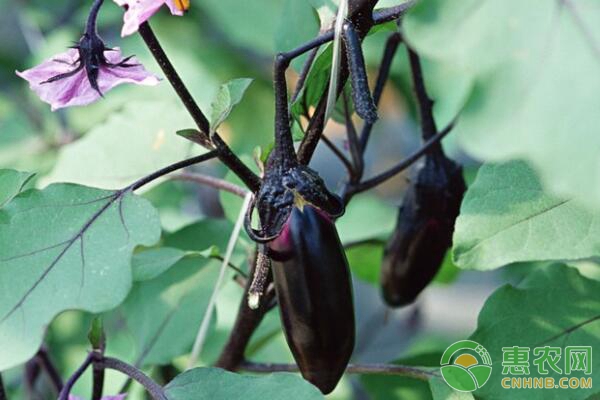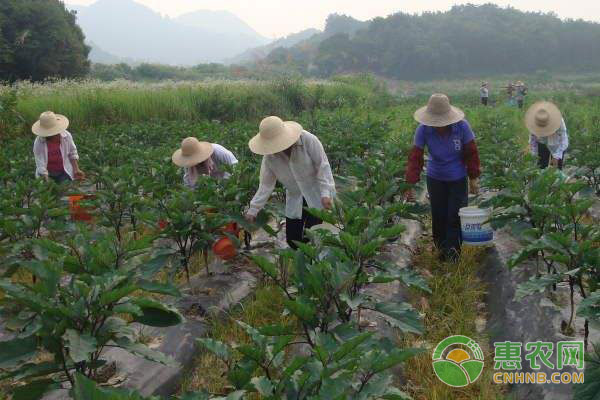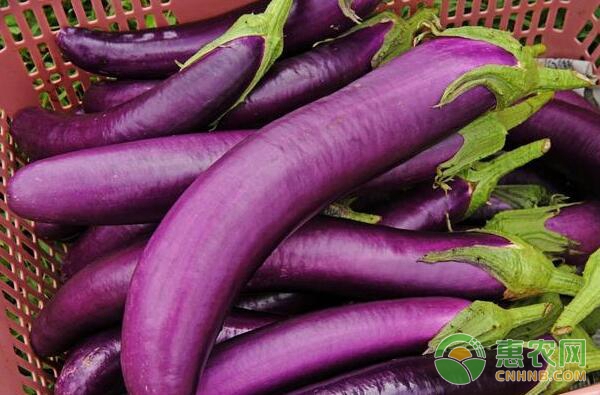The grafting cultivation of eggplant in the solar greenhouse not only solves the soil-borne diseases, but also achieves disease resistance, high yield and stable yield. Let's learn about the grafting cultivation techniques of winter and spring eggplants in the greenhouse with Xiaobian. 1, variety selection The rootstock is made of Torumbam. The roots of this variety are developed, and the plants grow very strong. They are resistant to blight, blight, bacterial wilt and root-knot nematode diseases. The scion can be selected from Britta, Nile, and Xi'an. 2, nursery The seedlings are first planted after the rootstocks are broadcast. When the rootstock is out of the seedling for about 15 days, the seedlings are planted with the scion when the cross is opened. Cultivated in winter and spring, the current rootstock sowing time in Chaoyang area is early June. 2.1 soaking seeds and germination It is difficult to sprout in Torumba. It is usually germinated with germination agent. The germination agent in the seed bag is dissolved in 25 ml of warm water, and 5 to 10 grams of Torubam seeds are soaked for 48 hours. Moisturizing and germination in the bag, you can put a plastic bag on the seed bag jacket, but be sure to breathe. The temperature during the day is kept at 28~32°C, and at night it is 18~20°C. It is turned once a day, once with water, and then sprouted in 4~5 days. After 50% of the seeds are white, they are mixed with a proper amount of fine sand to start sowing. 2.2 Seedbed preparation The nursery bed area of ​​Toru Bam is 5~10 cubic meters. The nutrient soil is prepared in the same way as the nutrient soil in cucumber seedlings. It is spread to the seedbed 10 cm thick, watered, covered with soil 1~1.5 cm thick after planting, and then mulched or covered. Moisturizing and high temperature such as bags or sacks promote budding, and bamboo arches are protected from rain and shade. The suitable soil temperature after sowing is 20 °C, at least 18~20 °C, the temperature is maintained at 28~32 °C, and the night is 20~25 °C. Appropriate shading at 35 °C. It is the key to keep the soil moist after Torubam sowing. The phenomenon of sudden drying and wetting must not occur. Otherwise, the emergence is not good. The temperature during the daytime is 20~25°C, the night temperature is 16~18°C, and it can't be lower than 15°C. Always keep the soil semi-dry and semi-wet. After emergence, 72.2% of Plex was sprayed 400-600 times once, and then sprayed again every 7 days to prevent the disease during the seedling stage. 2.3 Transfer seedlings When the rootstock grows to the center of the two leaves, move it into the nutrient bowl of 9 cm × 9 cm or 10 cm × 10 cm 30 to 40 days after the sowing. If the weather is hot, it can be properly shaded. 3. Grafting 3.1 Rootstock treatment When the rootstock grows to 6~7 leaves and the stem is 0.5 cm thick, the blade is cut at the semi-lignified position at the 3 leaves, the head is removed (the rootstock is 3~4 cm high), and then vertically in the middle of the rootstock cut surface. Cut into a 1 cm deep incision. 3.2 Scion treatment The scion grows to 5~6 leaves, and the plant height is 10 cm. In the semi-lignified area (ie, the eggplant seedlings are purple-black and green), leave 2~3 leaves, cut off the roots with a blade, and cut into wedges. The size of the wedge is the same as the rootstock cut (1 cm long), and the scion is inserted into the rootstock incision and aligned with a grafting clip. 4. Management after grafting 4.1 Humidity After the grafting, the nursery (nutrition) is placed in the nursery, placed in a tightly placed kettle with a kettle, poured through, and supported with a bamboo arch membrane. No ventilation is required for the first 6 to 7 days, and the humidity is maintained above 95%. After the airtight period, ventilate 1~2 times a day for about 2 hours. After that, gradually increase the number of air release and prolong the ventilation time, but still maintain a high air humidity. Spray water once or twice a day at noon until it is fully alive. Transfer to normal management. 4.2 Temperature 25~30°C during the day and 20~22°C at night. Above or below this temperature is not conducive to interface healing. 4.3 Lighting After the grafting, the first three days were fully shaded, and the fourth to sixth days were half shaded. It can also be shaded in the morning and evening, shaded at noon, shaded on cloudy days, and shaded on sunny days. Later, as the interface gradually healed, the shade was removed. After 10 days, the wound basically healed and was transferred to normal management. 5, colonization Before planting, the ground should be deepened and the base fertilizer applied. Because the root system of the rootstock is very developed, the water and fertilizer conditions are relatively high. The high-quality farmyard manure is more than 10,000 kilograms per mu, 50 kilograms of diammonium phosphate, 20 kilograms of potassium sulfate, and 50 kilograms of superphosphate. Britta, Nile and other purple eggplants are planted as sorghum, with a height of about 15 cm, an upper width of 80 cm, a width of 100 cm, an aisle width of 50 cm, a row spacing of 50 cm, a plant spacing of 50 cm, and a planting of 1400 to 1600 plants per mu. . Install the hose micro-irrigation or open the ditch in the middle of the two ridges to water, cover the mulch to warm and moisten, and seal the seedlings. The interface should be more than 3 cm above the mulch to prevent the grafting knife from being infected twice, resulting in soil-borne diseases. 6, post-plant management 6.1 Improve light intensity Eggplant is strictly required for light. It should be covered early and covered with straw curtains to keep the film clean and clean and increase the light transmittance. Especially in the snowy days, you should uncover the straw curtain and see some scattered light. 6.2 Temperature and Humidity Management After planting, it is necessary to seal the insulation to promote slow seedlings. After slow seedlings should be slower before the seedlings, the daytime temperature is 23~28 °C, more than 30 °C. 16~20°C at night, the minimum should not be lower than 13°C, the air humidity should be controlled at 50%~60%, the soil should be kept moist (wet and not sticky), avoid flooding with large water, it should be poured in small water, and it should be done at low temperature and high humidity. It may strengthen ventilation and drainage to reduce the chance of disease. 6.3 Fertilizer management After planting, pour enough water, usually do not water before the eggplant is placed. When the eggplant enters the blinking period, it starts to water, and at the same time, it is required to apply the Israeli Haifa Potassium or Potassium Nitrate 8~10kg per mu, and enter the result of 5~7 days of water. It should be fertilized according to the growth of the plant, such as The growth is weak, and the nitrogen and phosphorus fertilizers are appropriately increased. In the original normal application of potassium or potassium nitrate, 5 kg of urea and 5 kg of diammonium are applied per mu. 6.4 Plant adjustment Grafted eggplants have strong growth potential, and the rootstocks will sprout new side branches, which should be removed in time to prevent the consumption of nutrients from affecting eggplant growth. Timely clean the old leaves and ineffective branches at the bottom. When the plants grow to 40 cm high, they will start to hang the branches. Each plant will only have two poles. One branch will be left in each section, and one eggplant will be left in each side branch and 1~2 pieces will be left. The leaves go to the top of the cap. The sling should be firm, in order to prevent the increase of the fruit, the weight of the plant increases and fall, and the rope is wound in time to facilitate the balanced growth of the branches. 6.5 Hormone treatment In order to prevent falling flowers and fruit and promote the rapid expansion of the fruit, hormone treatment should be used, usually using the agricultural harvest of Shenyang Agricultural University and 25% sitting fruit. 6.6 Disease prevention The main diseases of eggplant are plague, brown streak, gray mold, flower rot and fruit rot; Insects include sassafras, aphids, whitefly, and leafminers. Both disease and pests must follow a precautionary approach. Cotton blight: In the early stage of the disease, spray 72.2% Plex water 700~800 times liquid or 70% ethyl phosphorus manganese zinc or 58% metalaxyl manganese zinc 500 times liquid. 80% Dasheng M-45 wettable powder 600 times liquid, etc. Spray once every 7~10 days, continuously control 2~3 times, and pay attention to spraying to protect the fruit. Brown streak disease: use 58% Rydmir manganese zinc or 64% antivirus sputum or 70% ethyl phosphite Zn WP 500 times solution, 75% chlorothalonil or 47% garnip WP 600 times, depending on Spray the weather and condition every 10 days or so, continuously control 2~3 times, and pay attention to the use of drugs alternately to improve the effect. Botrytis cinerea: This disease must occur in the case of farming operations to spread the disease, especially the use of hormones or flowers is a way to spread the disease artificially, so the recommended method of using hormones is spray. When the disease can be used, 50% speed Keling 1000 times solution, or 70% methyl thiophanate 600 times solution, or 65% methicillin 1000 times solution, or 50% more moldy 700~1000 times solution, 7~10 days Spray once and spray continuously for 3~4 times. Tea sassafras: Spray control can be carried out with 73% gram of emulsifiable concentrate 2000~2500 times or 2.5% of Uranus emulsifiable concentrate 2500~3000 times. Aphids, whitefly mites: These pests can be trapped by yellow plates. The medicinal agent can be sprayed with 80% dichlorvos emulsifiable concentrate 1000 times solution and 10% imidacloprid 2000 times solution. It can also be fumigated with 200 grams per mu of dichlorvos. Whitefly can also be controlled by spraying with 10% chlorpyrifos 2000 times. Liriomyza sativae: It can be controlled by spraying 1.8% Aifuding EC (avermectin) 3000~4000 times or 40% green vegetable 1000 times. The above is the grafting cultivation technique of winter and spring eggplant in the solar greenhouse in Xiaonong.com, have you learned it? If you want to know more about agricultural technology, please pay attention to the Hui Nong School!
Our medicinal synthetic polyisoprene gasket for injection does not contain any substances that can easily produce pyrogen. We now use a unique technique to add cytotoxicity to the routine test of butyl rubber stoppers such as pyrogen, hemolysis, acute systemic toxicity test and so on. Systemic injection test and intradermal stimulation test have been used abroad for many years.Our good puncture resistance ensures the minimum rate of chip drop during the puncture process and our good self-sealing performance can guarantee no leakage during using process in hospital.Also,good retention of puncture device ensures that there is no needle slider and needle drop in the process of hospital use.
Isoprene Gasket, Medical Synthetic Isoprene Gasket, Pharmaceutical Polyisoprene Disc, Pharmaceutical Synthetic Disc, Gasket for syringe, syringe piston, syringe rubber Suzhou CRH New Material Technology Co.,Ltd. , https://www.crh-health.com

